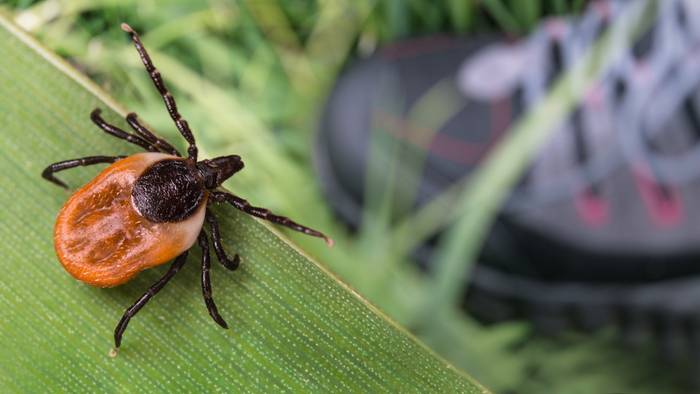Borreliosis is the most common animal-to-human disease in Europe, North America and Asia. In recent years, Lyme disease has been regularly diagnosed in the Czech Republic from 4 to 5 thousand people. person per year. Read the answers to basic questions and gain a clear understanding of this often mythical disease.
Lyme disease
What is Lyme disease?
Lyme borreliosis (also called Lyme borreliosis or Lyme disease) is an infectious disease caused by bacteria of the genus Borellia. The connection between the disease and this coiled bacterium has an interesting history. Lyme is a city in Connecticut, USA where children and adults since the 1960s have suffered from a strange illness that included joint problems, rashes, and chronic fatigue. Since it was not possible to establish the cause, the disease was named simply by the place of occurrence – Lyme disease. It was only in 1982 that Wilhelm Burgdorfer showed the connection between the problems of the city’s inhabitants and bacteria transmitted by ticks. In his honor, the bacterium that causes Lyme disease was named Borellia burgdorferi.
Will anyone get sick if they get infected with an infected tick?
Lyme borreliosis is very troubling for many people, so it is certainly worth mentioning that the disease occurs in only 5 out of 100 people who have had an infected tick. The chances of infection are slightly higher if we remove the tick later than 24 hours after sucking, but in most cases the body will prevent infection or the disease is completely invisible and without symptoms.
What are the symptoms of Lyme disease?
If Lyme disease occurs, the symptoms can be really varied, because the disease can affect almost any tissue of the body – skin, joints and muscles (swelling, pain, later arthritis), the nervous system (headaches, tics, muscle twitching, paralysis of certain parts body), less often the eyes (vision problems, double vision) or the heart (inflammation of the heart muscle). In the body, bacteria are spread through the blood and lymph. A typical early symptom, which is present in 80% of cases and warns the patient of the problem, is a spot on the skin at the site of the tick bite (or elsewhere on the body). The spot, or spot if you prefer, usually appears a few days after aspiration and is characterized by red edges and a white center, which is consistent with how Borrelia spreads out of the tissue at the injection site. The spot may resemble a target. Technically, this most famous skin symptom of Lyme disease is called erythema migrans. Lyme disease also presents with general symptoms such as malaise and extreme fatigue. At the first stage, it may resemble the flu, including a fever.
How is Lyme disease treated?
As we said, Lyme borreliosis is caused by bacteria and is therefore treated with antibiotics. Antibiotic treatment for borreliosis takes longer than we are used to, for example with common respiratory infections, usually 2 to 3 weeks. The drug of first choice is currently the tetracycline antibiotic doxycycline, the penicillin antibiotic amoxicillin, less often azithromycin. If the nervous system is affected, your doctor may recommend a medicine containing vitamin B to speed up regeneration. Of course, pain relievers (ibuprofen, naproxen, diclofenac, etc.) can be used if needed. During antibiotic treatment, especially this long-term treatment, remember to take probiotics to minimize their side effects on the digestive tract. Dietary supplements may also be recommended. B vitamins and magnesium to support the nervous system. Food supplements intended to support immunity (oyster mushrooms, echinacea, nucleotides, etc.) are not used in borreliosis, because autoimmune reactions occur during the disease, and therefore stimulation of immunity in these cases is undesirable. If you are interested in taking nutritional supplements or over-the-counter medicines for Lyme disease, talk to your doctor or pharmacist.
Lyme borreliosis 2
Can Lyme Disease Be Chronic?
Problems such as fatigue, decreased performance, and joint and muscle pain may persist after treatment. This condition is called postborreliosis syndrome. Repeated antibiotic treatment is not justified in this case. Treatment of these problems is symptomatic, pain relievers and sometimes psychotropic drugs are used, since in some patients the problems may have psychogenic causes.
How is Lyme disease diagnosed?
The doctor diagnoses borreliosis based on symptoms and laboratory tests that determine the presence of antibodies against borreliosis (IgM, IgG) in the blood. Antibodies begin to form only a few weeks after contact with an infected tick. There is also a home test for borreliosis. If we talk about testing for antibodies, it should be noted that their presence without clinical signs of the disease is not a reason for antibiotic treatment. From 5 to 10% of completely healthy people are positive.
Can I get Lyme disease from a mosquito or other stinging insect?
For example, it is unlikely that you will catch Lyme disease from a mosquito. Although Borrelia has also been found in complex animals other than ticks, transmission to humans has not been demonstrated. Experts believe that Borrelia in the body of other hosts do not have suitable conditions and survive in them only for a short time.

Leave a Reply